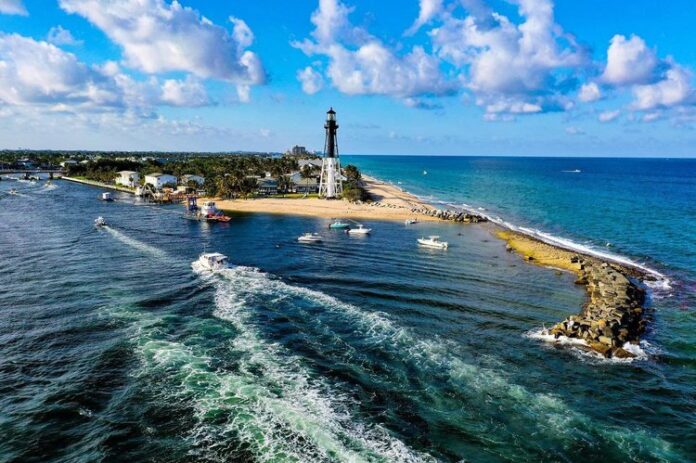Ever notice that brown stuff deposited in clumps along the seashore of the beach? Well, it’s called Sargassum and it’s not going away anytime soon. Spanning from April to August this brownish-red algae, mass collects upon beaches every year but now the people of South Florida are starting to notice the abundance of Sargassum overtaking the entire beach face.
Waves of Sargassum are expelled from their substrate among the benthos (sea floor) during spring and summer months and end up suspended along the shoreline. It has been named the Great Atlantic Sargassum Belt, because it can be viewed from space reaching from the coast of Africa all the way to the Gulf of Mexico.
According to a study with FAU, the steady surge of Sargassum blooms are the result of increased nitrogen levels from natural and anthropogenic aftermath such as sewage and runoff. Billions of gallons of partially treated sewage and nutrient rich pollution runs off into sea turning a flourishing ecosystem into mass algal blooms, impacting tourism and local economy. Beachgoers and sea turtles alike are impacted by the surge of sargassum.
Environmental Impacts
Unlike red tide blooms, Sargassum is generally harmless. However, tourists don’t find swimming and sunbathing in smelly algae and seaweed aesthetically pleasing. When you look through Sargassum patches, you will find coral, sponge, dead fish and lots of anthropogenic debris (plastic). But why else should beachgoers and scientist both care about the inundation of seaweed? It creates yet another hurdle for baby sea turtles to overcome during nesting season.
Most know the challenges faced by baby sea turtle hatchlings. They must dig their way out of the sand and seaweed to get to the ocean safely while avoiding distracting light and other predators. Among atmospheric changes and rising sea temperatures, sea turtles sex ratio begins to reflect the hotter temperatures.
Climate predicts the gender of sea turtles. Higher temperatures result in more females during the embryonic period. During a study with University of North Carolina, marine ecologists recorded the ground temperature beneath the sand after a layer of Sargassum had been expelled onto the beach. The study confirmed their predictions that the algae would act as a layer of insulation for the beach. It traps heat and moisture during the autumn months, slightly warming the sand. In reverse, it shades the beach from the hot sun during the summer months, keeping it cooler.
These temperature changes are enough to change the predictions of sea turtle genders. Even 0.21 degrees Celsius is enough to affect embryo development. Too many females from rising temperatures can result in a population decline of certain sea turtle species. Something to take note of during the autumn months while Sargassum and sea turtle season is at a peak.
Do you think Sea Turtles will adapt to the ever-changing climate influences on the beach?


